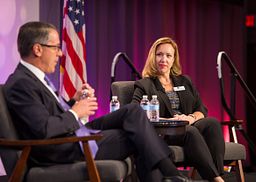Understanding the Intersection of Wellness and Justice, Equity, Diversity & Inclusion
How to Support the Well-Being of Your Underrepresented Students and Staff
In recent years, PAEA Presidents have had an opportunity to spotlight key issues in PA education. After George Floyd was killed during an encounter with the police in Minneapolis, Past President Howard Straker, EdD, MPH, PA-C met the moment, hosting discussions with students, faculty, and staff about how we can improve justice, equity, diversity, and inclusion within PA education. As we entered a second year of teaching in a pandemic, Past President Michel Statler, MLA, PA-C discussed and launched programming that focused on physical, mental, and spiritual wellness in the wake of confronting major stressors brought on by Covid-19.
I am struck by – and hope to focus on – the critical intersection of DEI principles and wellness. Many programs have made efforts to address student and staff mental health, engagement, and productivity. However, as we discuss strategies to foster wellness, it is also important to consider how to remove barriers to wellness.
These initiatives often fail to address an important link between well-being and identity. We cannot expect someone to be well when their full identity is not seen; we cannot subtract elements of ourselves, like race and gender identity, from our experience as students, educators, or clinicians.
To create an equitable, inclusive workplace, it is necessary to address the unique needs of every student, staff, and faculty member. When this does not occur, and members who are part of marginalized groups are made to feel invisible or disrespected, we are not only ignoring them, but harming their mental wellness. There is no way to meditate our way out of pay inequities or downward dog our way out of racism.
It is imperative for programs to actively consider how to be more inclusive and equitable. Provide unconscious bias training to all faculty and staff; be mindful of all religious and cultural holidays when scheduling exams; provide spaces for students, faculty, and staff to pray; dig deeper when developing curricula to include cultural diversity; examine your program’s equity in wages, promotion, and job assignments.
Know that this will require a constant reassessment of your program’s progress and climate as this should be an ongoing process. We may not have the same experiences, but we can learn from each other. Empower your students, faculty, and staff to work and learn at the best of their ability.




